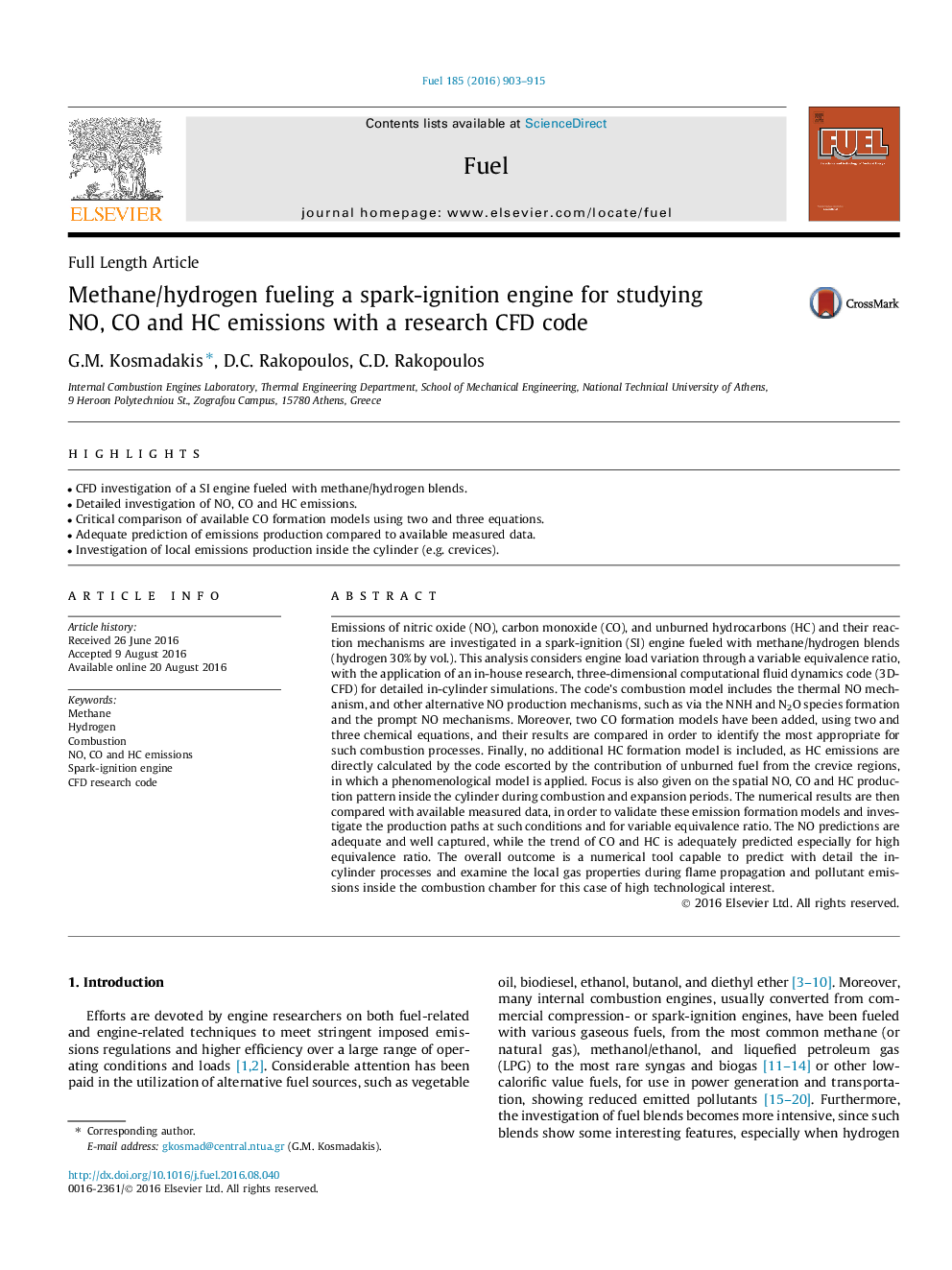| Article ID | Journal | Published Year | Pages | File Type |
|---|---|---|---|---|
| 6632911 | Fuel | 2016 | 13 Pages |
Abstract
Emissions of nitric oxide (NO), carbon monoxide (CO), and unburned hydrocarbons (HC) and their reaction mechanisms are investigated in a spark-ignition (SI) engine fueled with methane/hydrogen blends (hydrogen 30% by vol.). This analysis considers engine load variation through a variable equivalence ratio, with the application of an in-house research, three-dimensional computational fluid dynamics code (3D-CFD) for detailed in-cylinder simulations. The code's combustion model includes the thermal NO mechanism, and other alternative NO production mechanisms, such as via the NNH and N2O species formation and the prompt NO mechanisms. Moreover, two CO formation models have been added, using two and three chemical equations, and their results are compared in order to identify the most appropriate for such combustion processes. Finally, no additional HC formation model is included, as HC emissions are directly calculated by the code escorted by the contribution of unburned fuel from the crevice regions, in which a phenomenological model is applied. Focus is also given on the spatial NO, CO and HC production pattern inside the cylinder during combustion and expansion periods. The numerical results are then compared with available measured data, in order to validate these emission formation models and investigate the production paths at such conditions and for variable equivalence ratio. The NO predictions are adequate and well captured, while the trend of CO and HC is adequately predicted especially for high equivalence ratio. The overall outcome is a numerical tool capable to predict with detail the in-cylinder processes and examine the local gas properties during flame propagation and pollutant emissions inside the combustion chamber for this case of high technological interest.
Related Topics
Physical Sciences and Engineering
Chemical Engineering
Chemical Engineering (General)
Authors
G.M. Kosmadakis, D.C. Rakopoulos, C.D. Rakopoulos,
